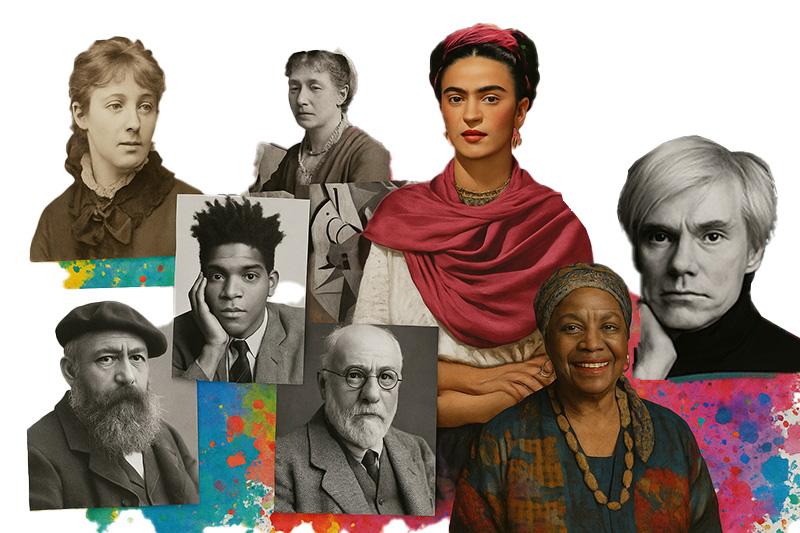In the art room we use a wide range of supplies from papers and paints to markers and recycled materials. It is difficult to maintain an eco-friendly art room when many of the materials we need to use are chemical based but there are some things we can all do to help the environment.
Painting
Look for paints that are VOC free, which stands for Volatile Organic Compounds. We use Global acrylic student paints that are environmentally friendly as they don’t contain VOC and are made in Australia. The packaging is recyclable, and the paints are non-toxic and contain no nasties such as ammonia or other volatile organic compounds. Look up the paints you are using to check their environmental credentials. Is there a more environmentally friendly alternative available?
Cleaning up
One of the environmental problems associated with painting is the clean-up stage. If you have excess paint, you could use it to paint spare or scrap paper and leave it to dry. It can then be used for future collage projects. See the Brian Richardson inspired collage flowers for grades 3-4. We used painted paper and then added another layer with printed patterns before cutting and collaging the papers.
By painting paper, you are creating another art material and also minimising the amount of paint going down the drain. Palettes are another item that are often not very eco-friendly in the art room.
Plastics may not be biodegradable, but they do last a long time so its a matter of weighing up which to use. Egg cartons make a good, recycled palette and have pre-made wells to put paint in. Baby food jars, old magazine pages, muffin tins or ice cube trays can all be used as palettes. It just depends on the project, the type of paint you are using and what you have available.

Newspapers
Re-use available materials where possible, they can often be obtained for free or at low cost. This will reduce the cost of supplies in your art budget and help the environment at the same time.
Magazines and newspapers can create interesting backgrounds for artworks and collage. Magazine images can also be used as the basis for drawing projects or transfer printing projects. Get families at your school to donate old magazines or newspapers. You can also contact a local newsagent or locally printed newspaper for unsold copies. Newsagents usually remove the front cover and return it but the rest of the magazine is thrown out.
Newspapers can be wrapped, bunched and scrunched to create bases for sculptures such as monster sculptures in the above image from the Mythical Art unit. If you have paper towel at school this can also be used for sculptures and won’t come out of your art budget.

Recycled Materials
Containers can be re-used and are great for sculpture projects, think steam punk robots, fish or creatures. Container lids can be used for circle templates in a range of sizes. CD’s can be reused for art projects such as weaving or scratch art. See the sun mandala art project in the India unit.
Fabric scraps can be used for collage and weaving projects. See the 5-6 lesson plan for fun fabric fish in the fish unit. We like using corks for printing to make dots and textured spots with acrylic paint. See the leopard artwork for K-2 in African Animals or the Cork Print Emotions lesson plan for K-2 in Wellbeing.
Your local recycling centre may provide a low cost or no cost option to obtain unwanted, clean materials from printers or manufacturers. Sign makers have offcuts of plastic signs that can be reused. These have a removeable back and are sticky. Contact them directly and take a box or bag to collect offcuts.
Print tests that are run through a commercial printer each day may have interesting test patterns to check that the colours are all printing properly, they can be fun to weave! Try a local printer to see if they have any available. A lot of recycled materialos can be collected at school. If you have a specific project in mind have kids bring in items from home that can be used such as container lids, newspaper and containers. The best thing about recycled art is the materials are free!
Latest Articles
Popular kids art lessons for teachers and ideas for the artroom
Tips for creating with fibre and Textiles in the classroom […]
10 Tips to Support Mental Health and Wellbeing for Art […]
Celebrating Artists’ Birthdays All Year Round Why not bring a […]






